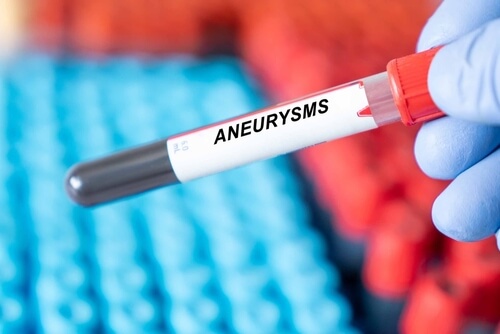
Suffering from an aneurysm can be incredibly scary. What can be even more frightening, though, is knowing that you didn’t get the treatment that you needed because your healthcare provider misdiagnosed your condition, even with all of the information and technology necessary to make a correct diagnosis.
At the Law Office of Kelley J. Johnson, our aneurysm misdiagnosis lawyer understand what you are going through and the pain and anger you may feel. You deserve answers, and you should not suffer further harm due to medical malpractice. For a free consultation with our legal team, please call our aneurysm misdiagnosis attorney today.
What Is an Aneurysm?
An aneurysm refers to a weakened and ballooned area in an artery. There are different types of aneurysms, and one of the most common is a brain aneurysm, known as a cerebral aneurysm. Other types of common aneurysms include aortic aneurysm (in the heart), popliteal aneurysms (in the leg behind the knee), splenic artery aneurysms (in the artery of the spleen), and mesenteric artery aneurysms (in the intestine).
The symptoms and effects of an aneurysm depend on where the aneurysm is located and how quickly it is diagnosed. Some of the symptoms of an aneurysm of the brain include:
- Sudden and extremely severe headache
- A stiff neck
- Seizure
- Drooping eyelid
- A loss of consciousness
- Confusion
- Blurred vision
- Double vision
- Light sensitivity
- Nausea and vomiting
Some people are at greater risk of a brain aneurysm than others. Some of the risk factors for a brain aneurysm include being older, smoking cigarettes, having high blood pressure, abusing drugs (particularly cocaine), and engaging in the heavy consumption of alcohol. A family history of brain aneurysms, as well as certain conditions that are inherent at birth, also increase the risk of a brain aneurysm.
Note that ruptured brain aneurysms are much more severe. Unruptured aneurysms may not show any symptoms.
How Are Aneurysms Diagnosed?
When a person is experiencing a brain aneurysm, it’s very important that the aneurysm is correctly diagnosed. While bleeding will usually only last for a few seconds when an aneurysm occurs, blood can cause serious damage to surrounding areas and cells and can lead to accumulating pressure within the skull. This pressure can result in a decrease in the supply of blood and oxygen to the brain.
According to the Mayo Clinic, a doctor should conduct a series of tests to determine whether someone has a brain aneurysm. Types of tests that you may be subject to include:
- CT scans
- Cerebrospinal fluid test
- MRI test
- Cerebral angiogram
What Causes Aneurysm Misdiagnosis?
It is very important that a brain aneurysm is correctly diagnosed as soon as possible. Even if the brain aneurysm is not ruptured, knowledge of the condition can offer telling clues about the patient’s overall health and potential future health complications. If a brain aneurysm is left undiagnosed and untreated, the consequences could be severe, particularly if the aneurysm is ruptured.
Unfortunately, brain aneurysms are commonly misdiagnosed. According to Misdiagnosis of Symptomatic Cerebral Aneurysm, 25 percent of patients were misdiagnosed during their initial medical evaluation. The study concluded: “Patients in good clinical condition with symptomatic cerebral aneurysms were commonly misdiagnosed. Misdiagnosed patients were more likely than correctly diagnosed patients to deteriorate clinically and had a worse overall outcome.”
Symptoms of a brain aneurysm may be mistaken for something else. Most of the time, when a brain aneurysm is misdiagnosed, it is because of the failure of the doctor to do a scan. This failure may result from confusion and miscommunication between doctors, nurses, and other staff; as a result of a doctor misinterpreting the patient’s symptoms as being characteristic of another condition; or simply because the doctor doesn’t have time to fully evaluate the patient and refer the patient for a scan.
In many cases, the failure to diagnose an aneurysm is the result of medical malpractice, the failure of a medical professional to act with the same degree of care that another medical professional in a similar situation would exercise.
Treatment for Aneurysm
There are two possible ways in which a ruptured brain aneurysm may be treated:
- The first is with a surgical clipping, which refers to a surgery of the brain where the blood vessel that feeds the aneurysm is clipped to stop the blood flow.
- The second option is what is known as endovascular coiling. This is a less invasive procedure that involves pushing a small wire through a catheter into the aneurysm, which will limit the blood flow and seal off the aneurysm from the artery.
Both procedures can be effective but may be potentially dangerous. Risks include potential bleeding in the brain, the loss of blood flow to the brain, and the need for a repeat procedure.
Contact Our Medical Malpractice Lawyer Today
If you are the victim of a brain aneurysm that was misdiagnosed ─ or if you are the surviving family member of someone who died of a misdiagnosed brain aneurysm ─ you need our experienced medical malpractice lawyer on your side. At the Law Office of Kelley J. Johnson, our compassionate legal team can explain your legal rights, investigate your case to determine whether malpractice occurred, and demand the full and fair compensation that you deserve.
We know how intimidating it can be to bring forth a claim for damages against a doctor or deep-pocketed healthcare provider. Let us represent you along the way and advocate for your best interests. Reach us now by phone or online to schedule your free consultation and learn more about your options.









